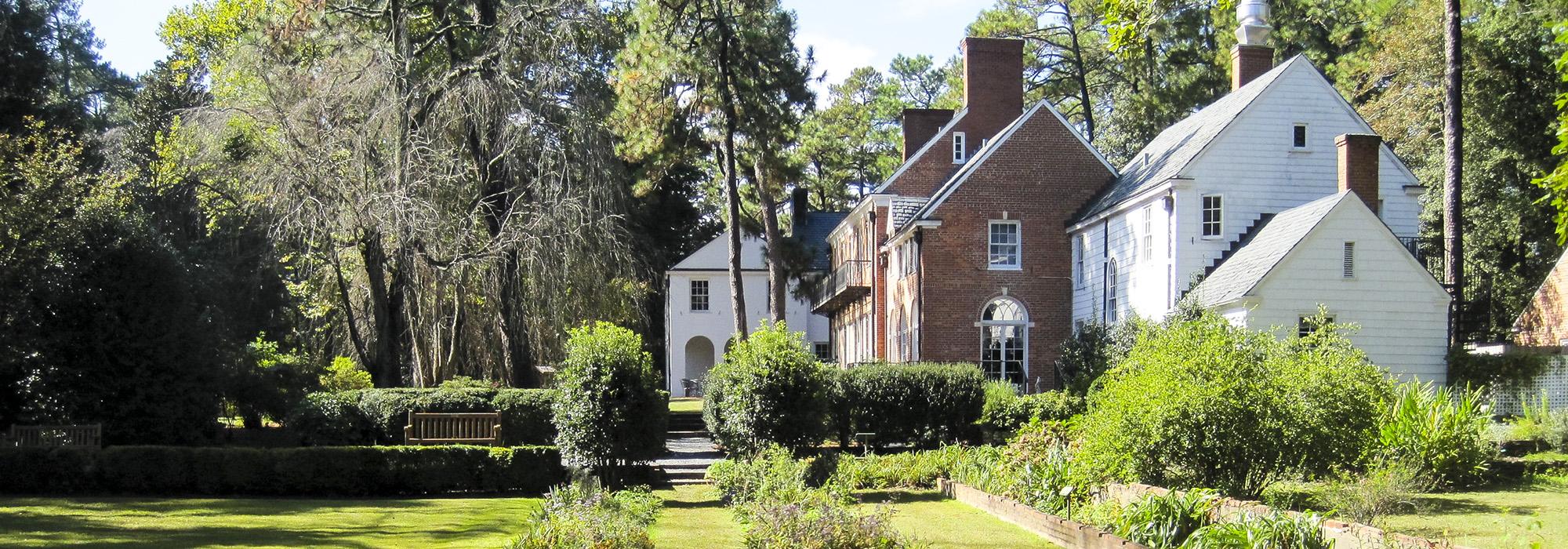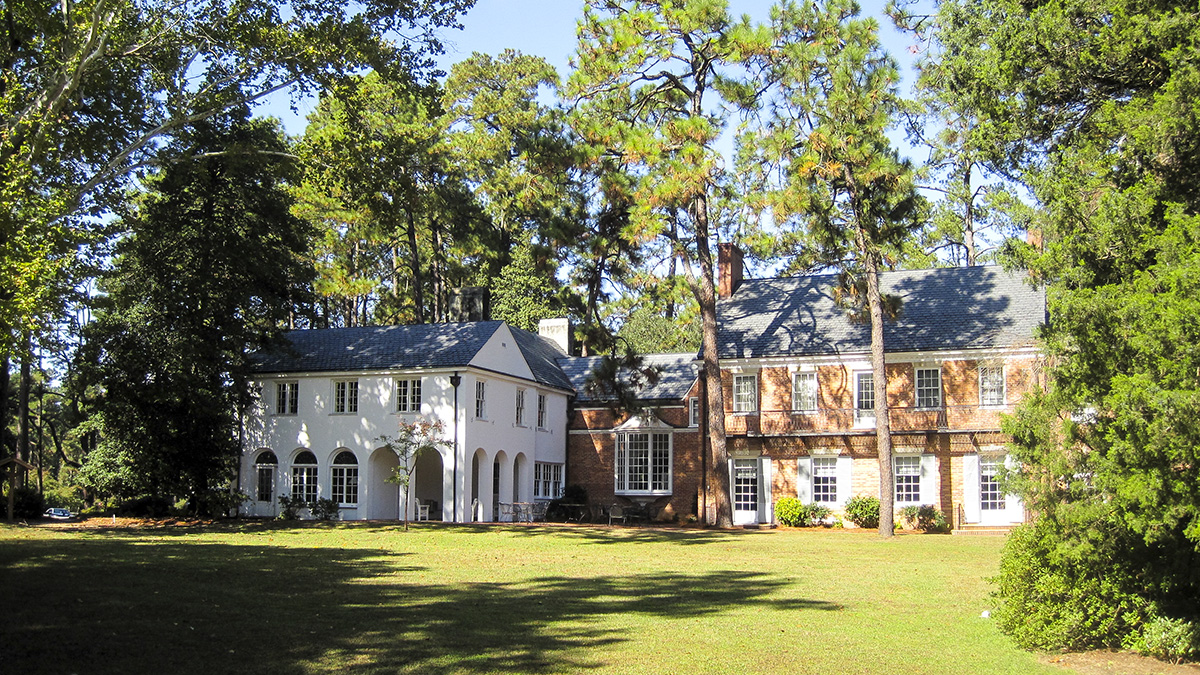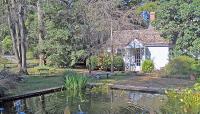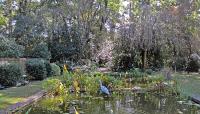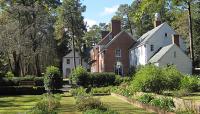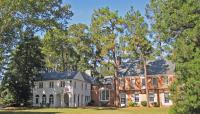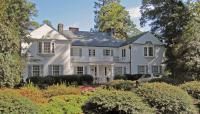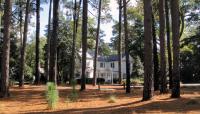Landscape Information
The setting for the Weymouth estate was designed over the span of 24 years by landscape architect Alfred Yeomans. Best known as the home of writer James Boyd II, Weymouth was an important center during the southern literary renaissance of the 1920s and 1930s, hosting such notable figures as William Faulkner, F. Scott Fitzgerald, Paul Green, Thomas Wolfe and others. The estate was originally more than 2,500 acres in size and included a forest of virgin longleaf pine trees. Yeomans original 1904 design for Weymouth commenced with plans for a great park. Public roads were opened in all directions across the hilly terrain, using to advantage natural features, and with care not to harm the old trees. Plans ultimately included tennis courts, a croquet lawn, a practice golf course, stables, and riding rings. The original approach to the mansion was from a long gravel drive framed by simple gateposts. The front of the house was informally landscaped with woodland plantings, and long open expanses to accommodated the Boyds' equestrian lifestyle. The yard behind the house was more formal, with simple boxwood-hedged parterres and paths leading down to the lower levels of long flower beds and a pool area featuring a serpentine wall. At the center of the lower garden was an open lawn that was lined by weeping cherries, against a backdrop of native pines, hollies, dogwoods, and magnolias. Weymouth's founding provided the context for the town's development as a resort community and, as such, is one of its most significant historic landmarks.



